A Walk into the Crocodile Paradise: Everglades Safari Park near Miami
A Walk into the Crocodile Paradise - Everglades Safari Park. The Everglades is a vast natural park that covers up to a quarter (!) of the southern part of Florida. Here you’ll find wild tropical forests, gloomy mangroves along the coast, and unfriendly swamps overgrown with sharp “sawgrass.” In these wetlands live many crocodiles, caimans, and alligators. If you don’t know the difference between these creatures - you can check an encyclopedia or simply read on. Of course, there are also gentle manatees, clumsy turtles, and even small shallow-water sharks. But the main highlight of such tropical parks is definitely the crocodiles. From downtown Miami, the drive takes no more than an hour at a relaxed pace with stops. Southwest 8th Street ends, and the kingdom of the Everglades begins - the road runs along endless swamps and humidity.
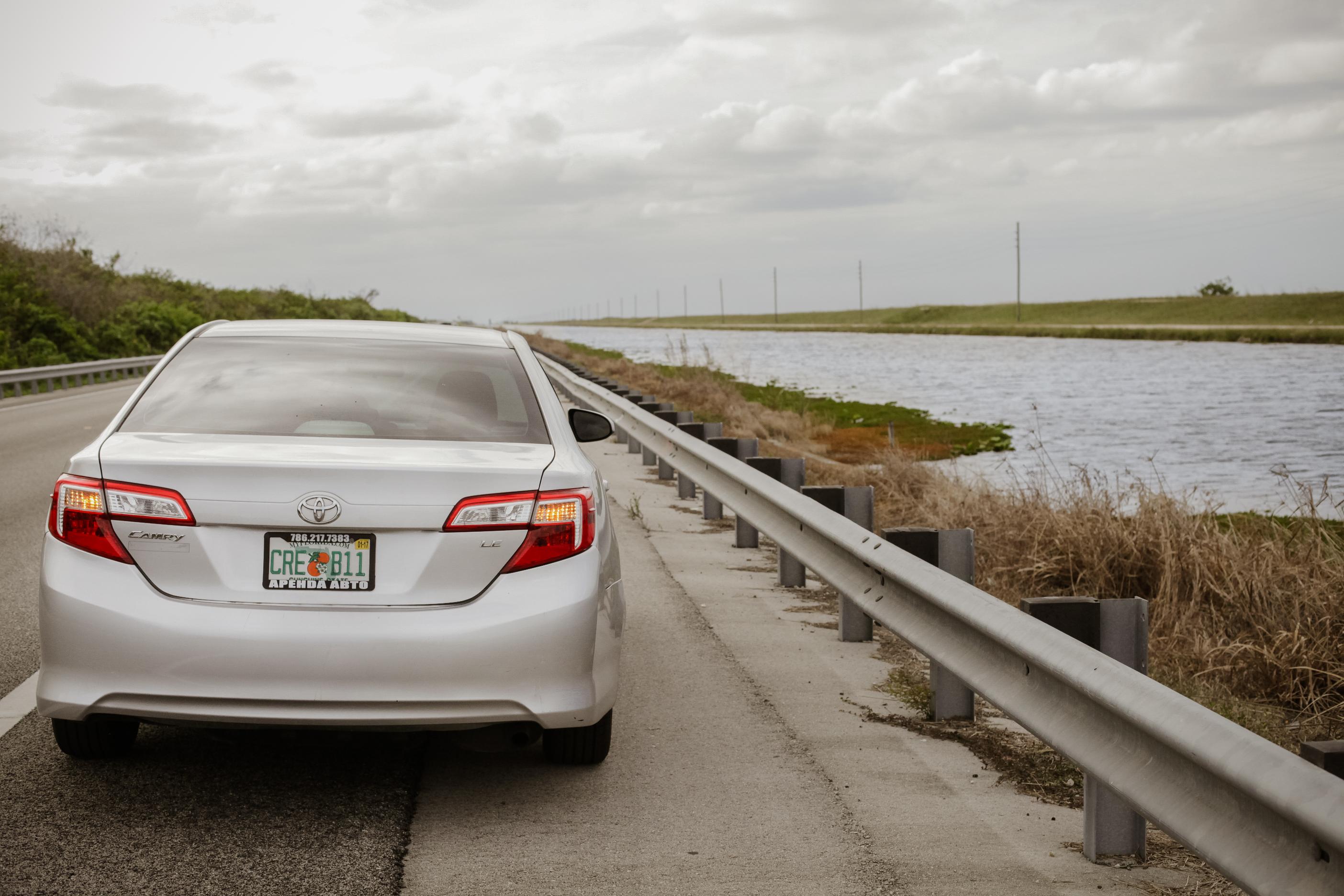 The day was cloudy, but that didn’t bother us at all. Tours in safari parks run in any weather, even during heavy rain - good to remember. Today we had a Toyota Camry from CarForLong - a solid three-year-old car that took us on our journey into the land of crocodiles. All safari parks look quite similar - we chose Everglades Safari Park, although we passed a few more places along the way with ads inviting us to see the green-skinned monsters. The adult ticket price is $25, but if you look for coupons online you can find good deals - ours cost $20 per adult, while just the day before they were $18. You have to catch the right moment. Children entered for free.
The day was cloudy, but that didn’t bother us at all. Tours in safari parks run in any weather, even during heavy rain - good to remember. Today we had a Toyota Camry from CarForLong - a solid three-year-old car that took us on our journey into the land of crocodiles. All safari parks look quite similar - we chose Everglades Safari Park, although we passed a few more places along the way with ads inviting us to see the green-skinned monsters. The adult ticket price is $25, but if you look for coupons online you can find good deals - ours cost $20 per adult, while just the day before they were $18. You have to catch the right moment. Children entered for free.
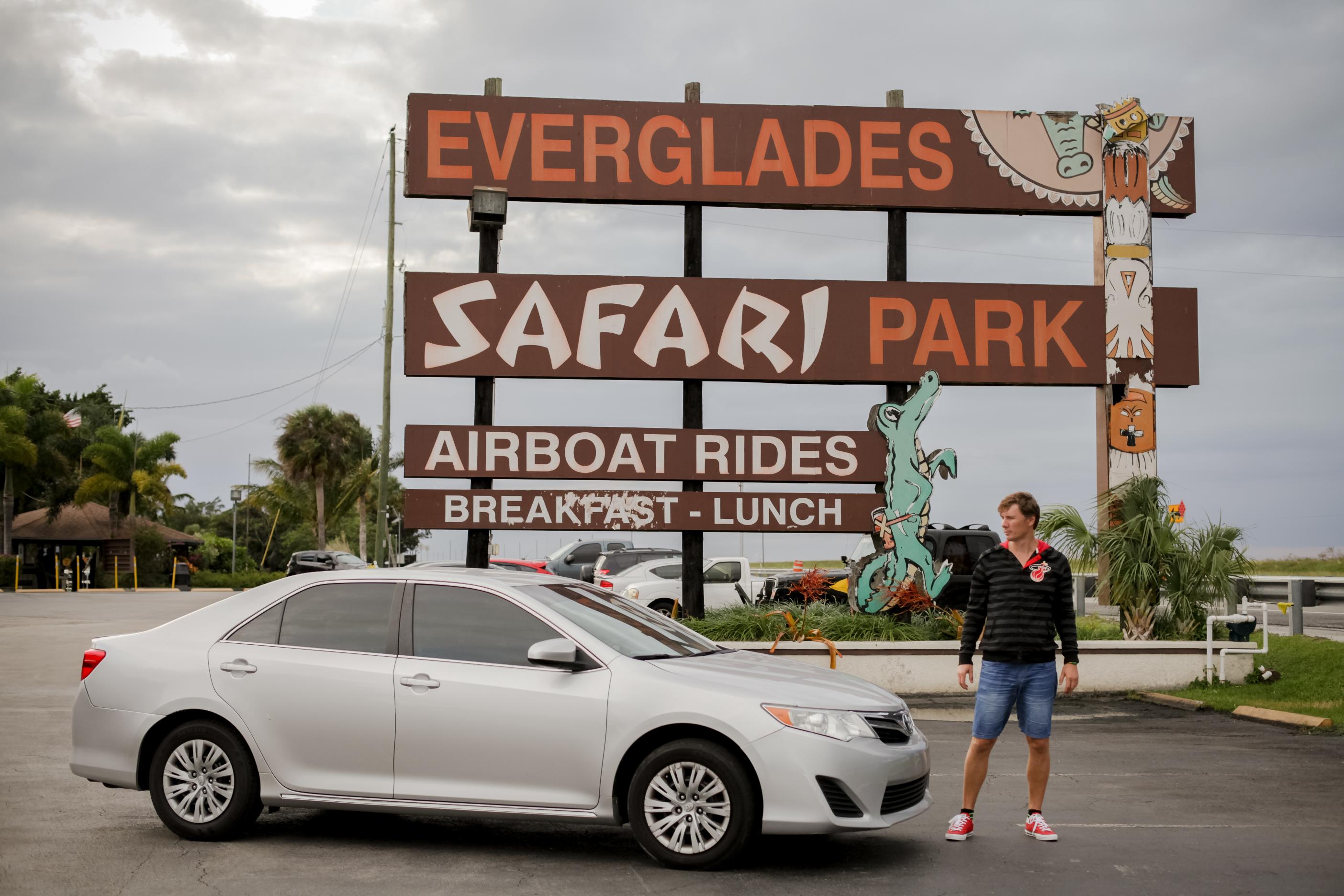 A funny fact - all the cars were instantly occupied by local birds, cheeky and absolutely clueless. As soon as we parked, they covered our roof, and the same was happening to other cars around.
A funny fact - all the cars were instantly occupied by local birds, cheeky and absolutely clueless. As soon as we parked, they covered our roof, and the same was happening to other cars around.
 At the entrance to the park lay a very large and extremely lazy crocodile. A real one. It took about five minutes of careful observation before he finally opened one eye and lazily looked us over, apparently evaluating how defenseless and digestible we were. A few seconds later the eye closed again, and we realized we had failed the lunch-test. Standing barely a meter away behind a very low fence, we could see the reptile in all its unappealing details. Still, touching such sleepy creatures is strongly not recommended, as a nearby guard reminded us.
At the entrance to the park lay a very large and extremely lazy crocodile. A real one. It took about five minutes of careful observation before he finally opened one eye and lazily looked us over, apparently evaluating how defenseless and digestible we were. A few seconds later the eye closed again, and we realized we had failed the lunch-test. Standing barely a meter away behind a very low fence, we could see the reptile in all its unappealing details. Still, touching such sleepy creatures is strongly not recommended, as a nearby guard reminded us.
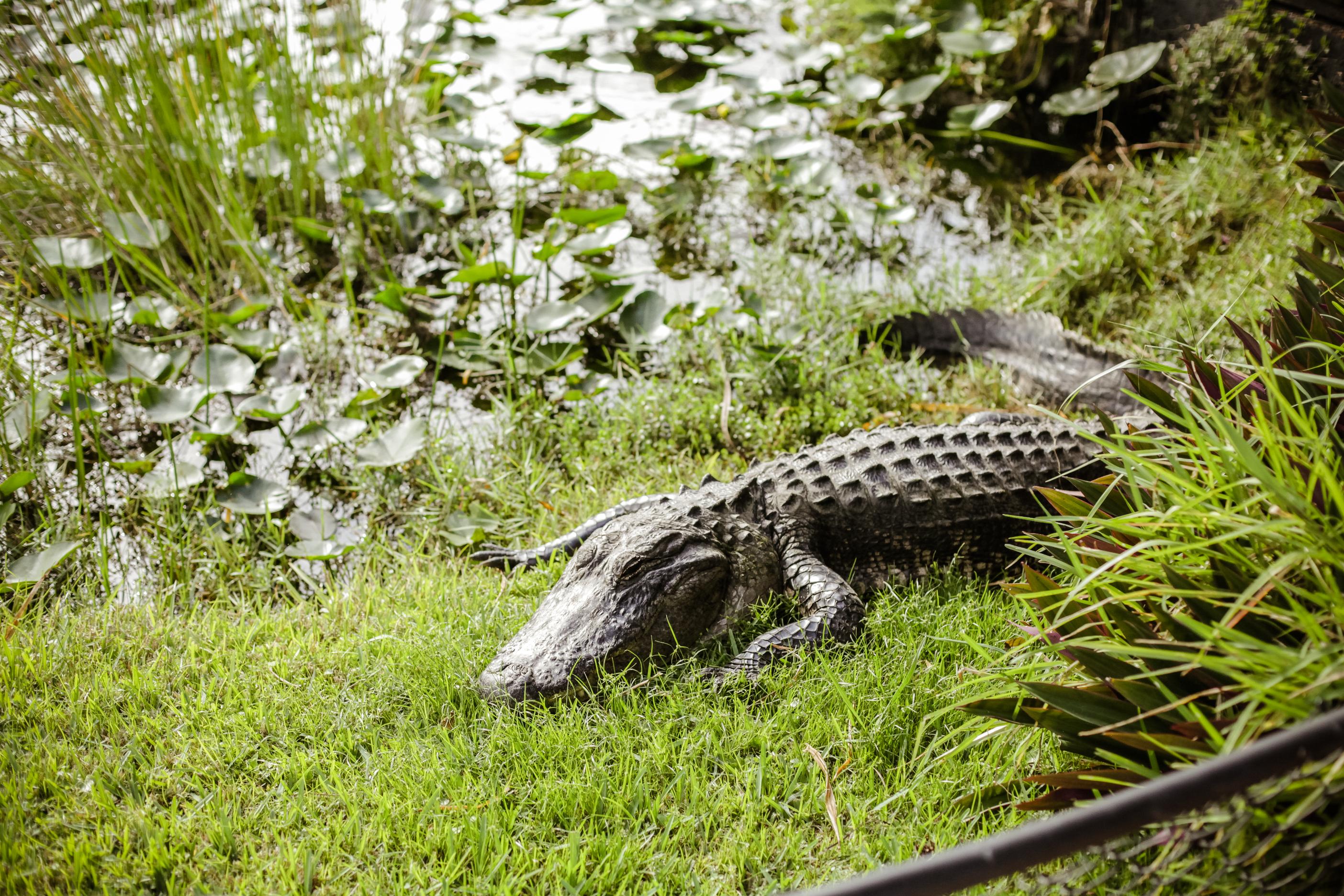 Not far from the “advertising crocodile” is the park entrance, where you can see airboats - flat-bottomed boats with huge fans used for fast and thrilling rides. All safari parks in the Everglades look about the same: wooden walkways and bridges, crocodiles wandering in groups, untouched swampy areas where these predators hide from tourists, “hands off the crocs” signs, and of course, the iconic airboats.
Not far from the “advertising crocodile” is the park entrance, where you can see airboats - flat-bottomed boats with huge fans used for fast and thrilling rides. All safari parks in the Everglades look about the same: wooden walkways and bridges, crocodiles wandering in groups, untouched swampy areas where these predators hide from tourists, “hands off the crocs” signs, and of course, the iconic airboats.
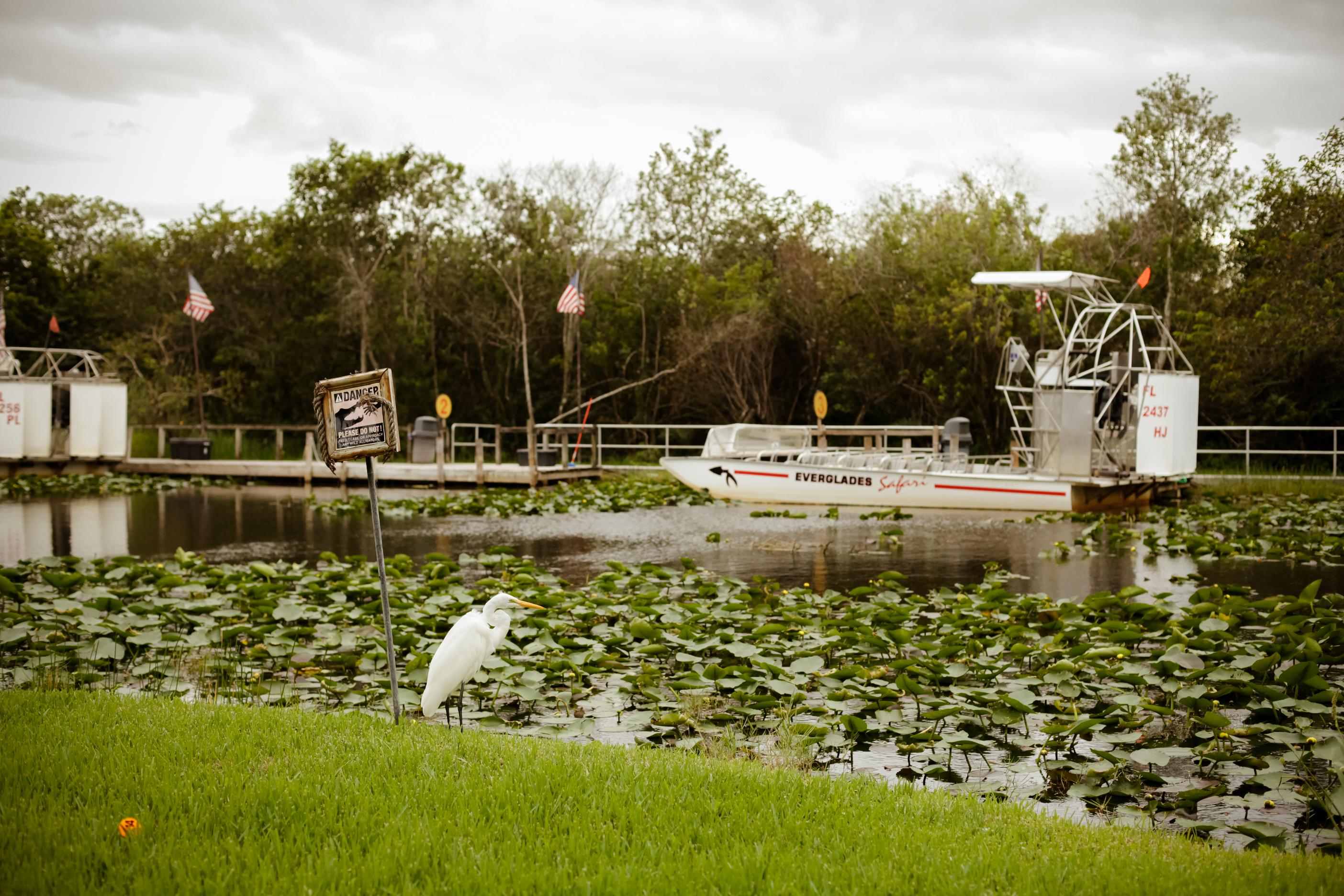
The park area itself is quite small, and there wasn’t much wildlife to be seen that day. Maybe it just wasn’t the best time for observation, or maybe that’s simply the way it is. We did spot an authentic Native American cross, likely just part of a simple exhibit for wide-eyed tourists.
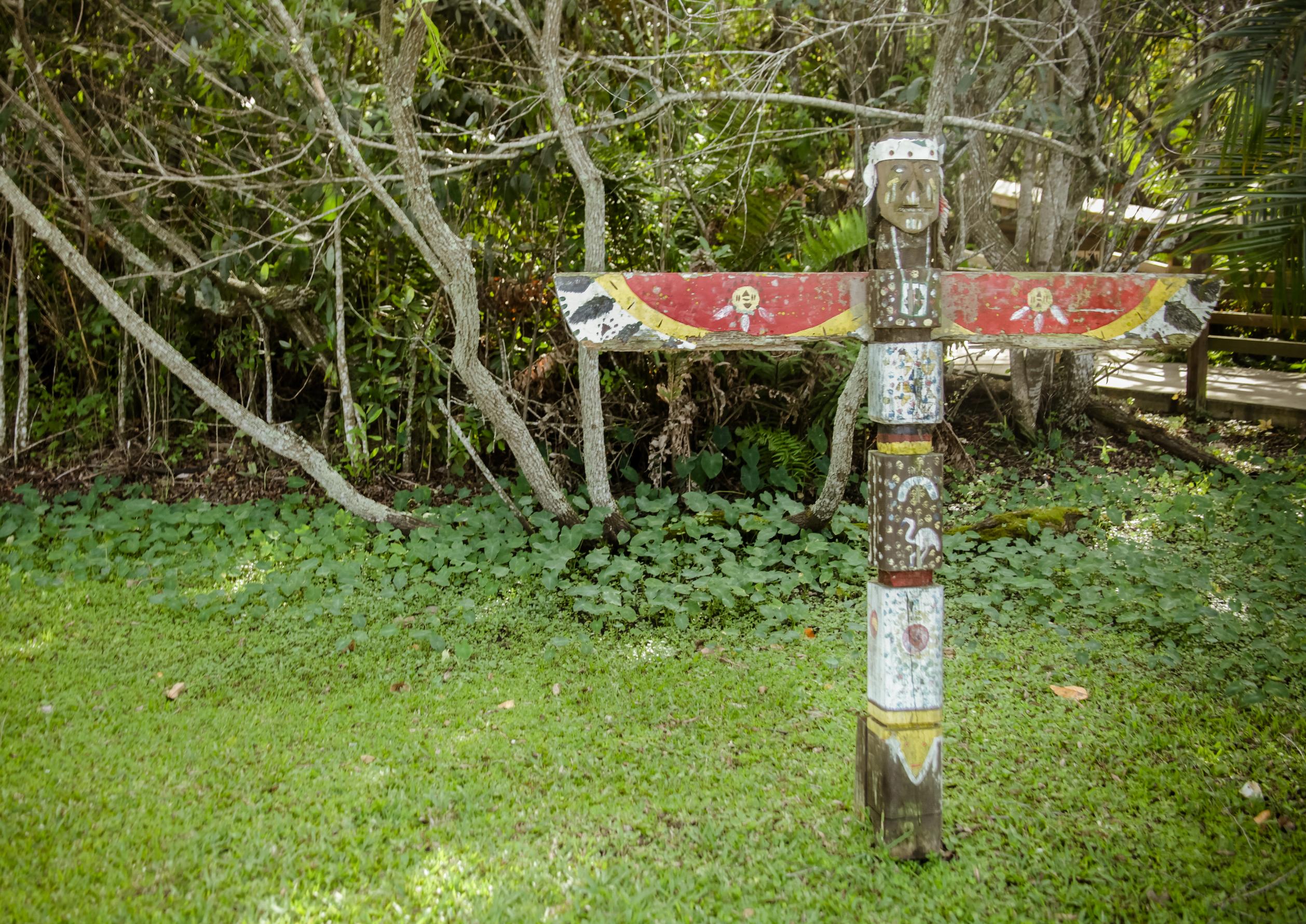
Before boarding the boat, children are given life jackets. Adults don’t get this privilege - their safety is their own responsibility. Bright orange earplugs are also handed out, since the airboat fan is very loud. However, the plugs are so uncomfortable that hardly anyone actually uses them, and you quickly get used to the noise - it isn’t that deafening. Around ten tourists squeeze into an airboat, some covering their ears anyway, and off it goes, skimming the water surface and pushing down reeds and grass beneath its hull.
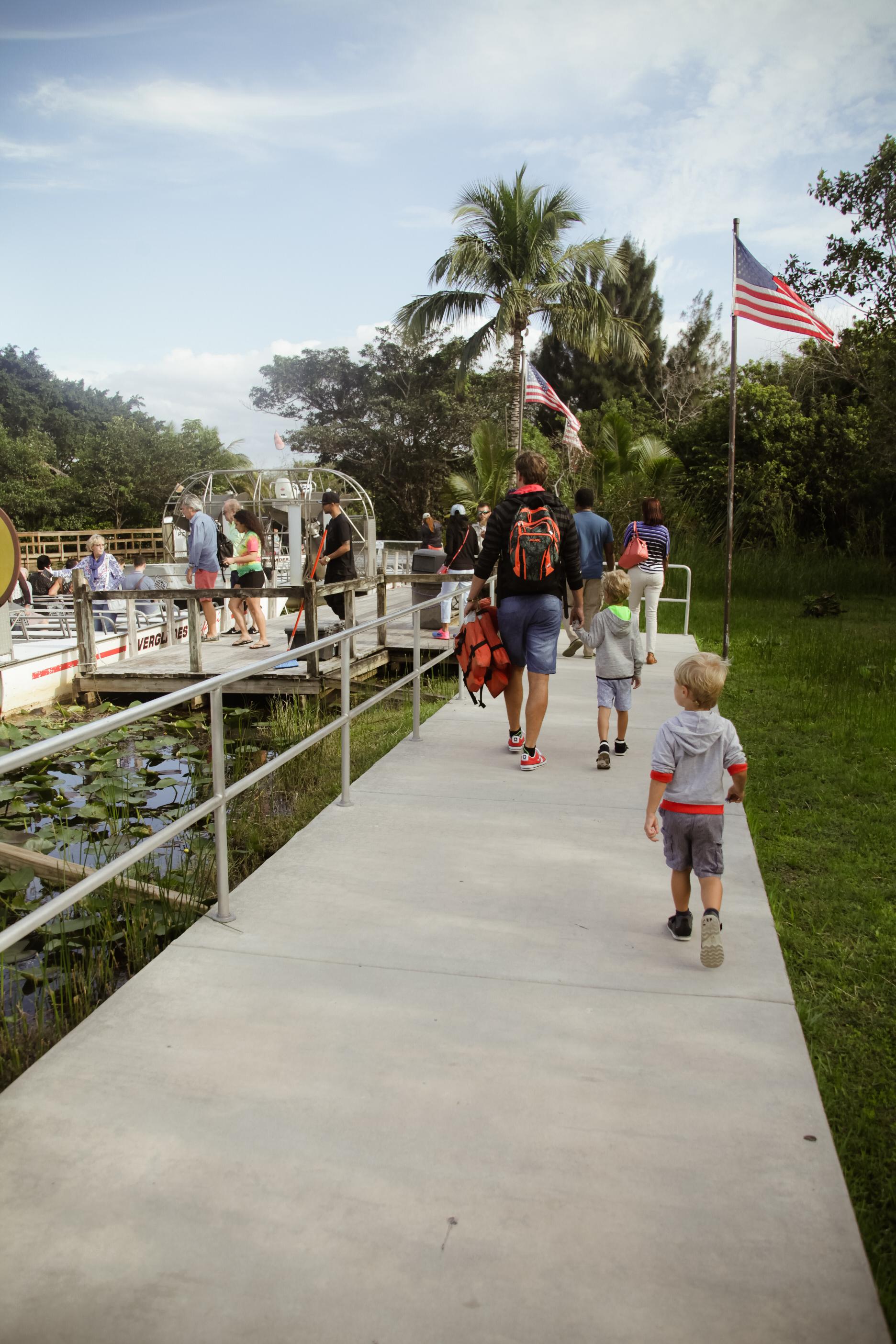
The excursion was led by an imposing bearded scout, also the airboat driver. He took us deep into the swamp and, in a rather boring way, talked about the park, its wildlife, and the differences between crocodile species. Time to reveal the secret: the main difference lies in their jaws and teeth. When a crocodile’s mouth is closed, the fourth tooth of the lower jaw remains visible. With alligators and caimans, the upper jaw hides this tooth. A true crocodile’s snout is sharp and V-shaped, while an alligator’s or caiman’s is blunt and U-shaped. Also, alligators and caimans can only live in fresh water and, although predators, usually fear humans and don’t bite legs.
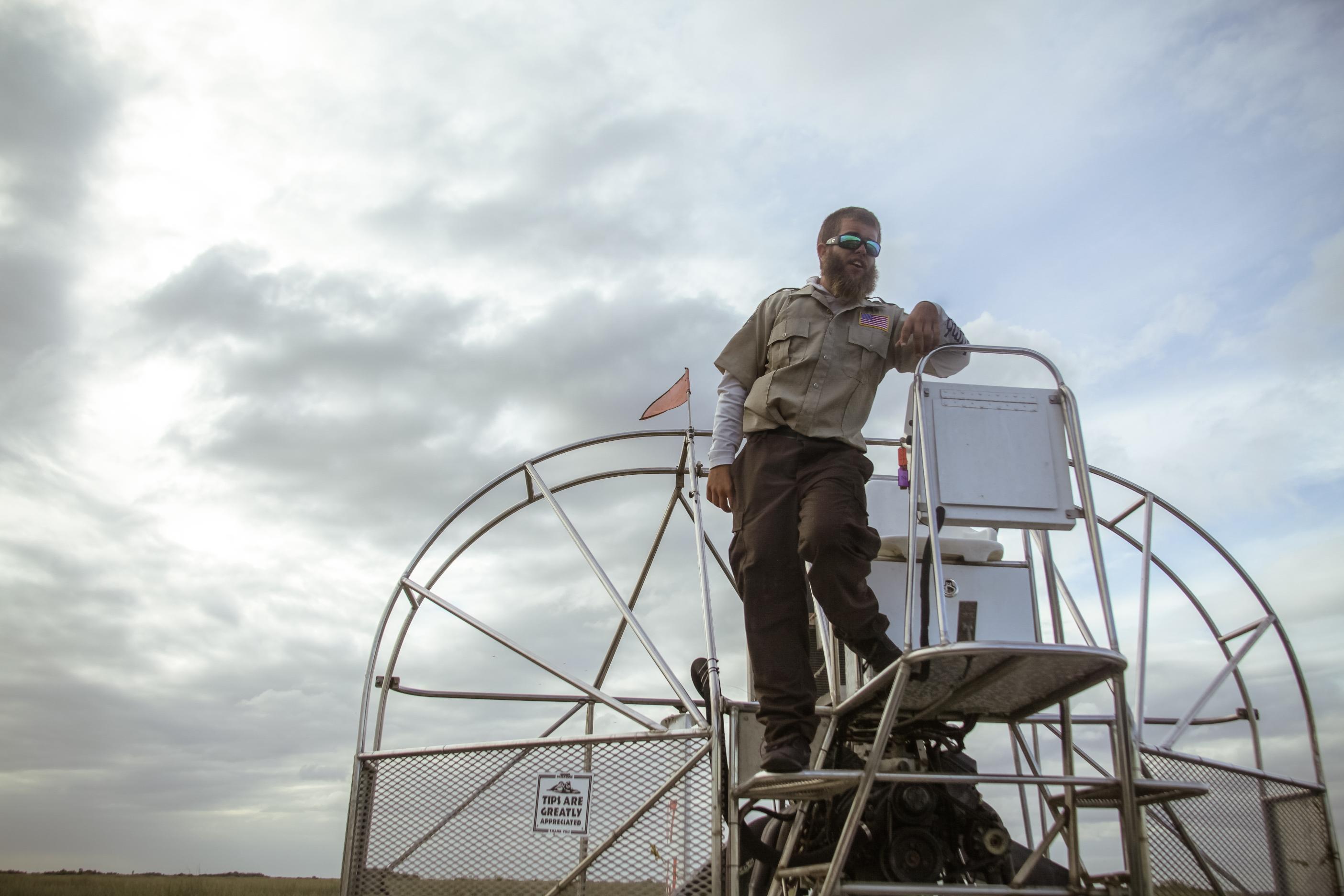
The kids were fascinated. The fast ride across the swamps was exciting, especially when we crashed straight into thick reeds as if into a wall - instinctively squinting, waiting for an impact. Of course, there was none, and the boat kept gliding, bending the grass underneath. From time to time, the airboat would stop, and everyone would look around, trying to spot lurking predators. The children stared into the dark, murky water. Dangerous. In Hollywood movies, this is the exact moment when a giant croc would leap out, crushing people and boats. In reality, of course, nothing like that happened.
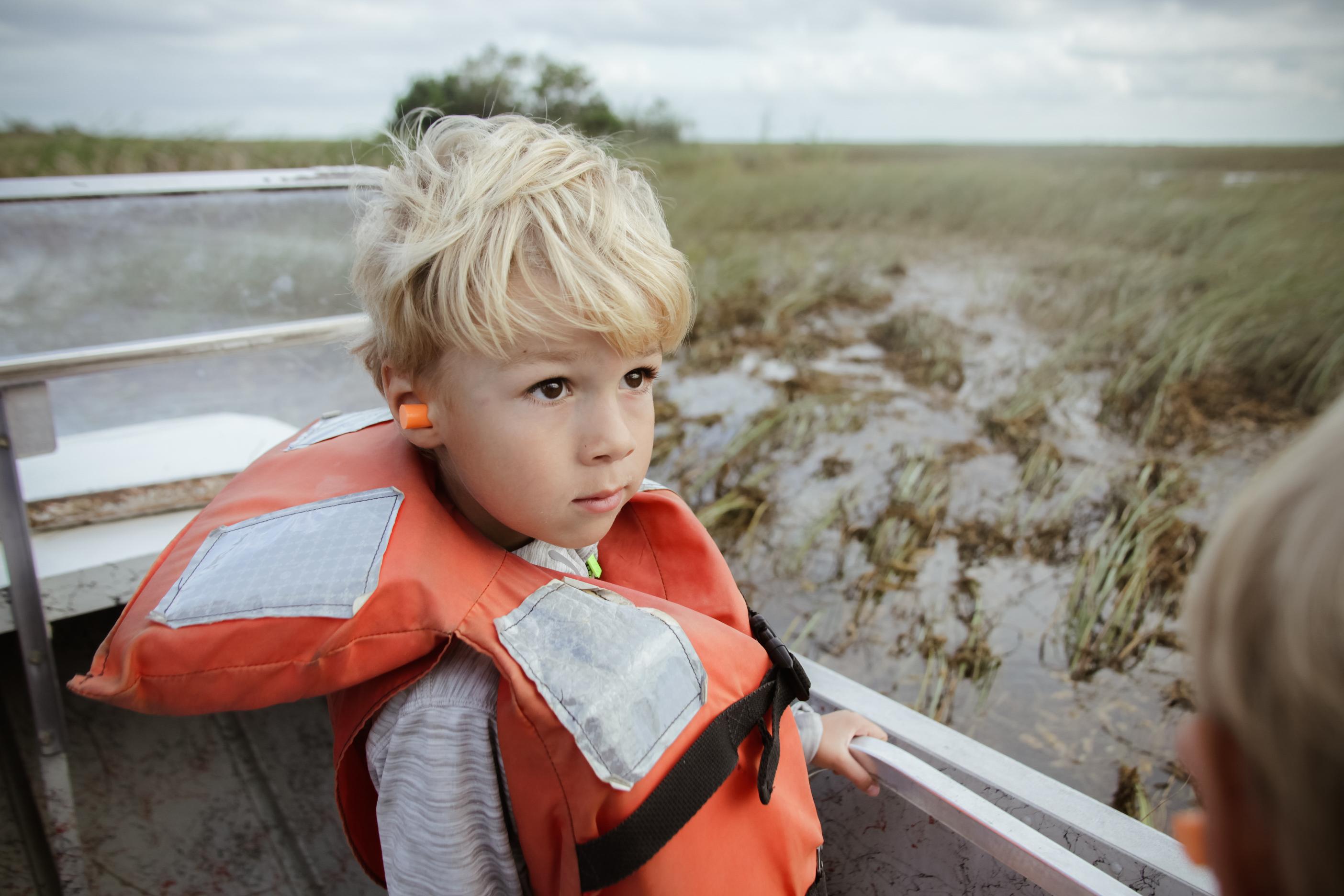
A huge bright tiger butterfly flew into the boat during the ride. Completely fearless, it sat calmly on hands and let itself be touched and observed. After a while, the kids released it back into its natural habitat overboard.
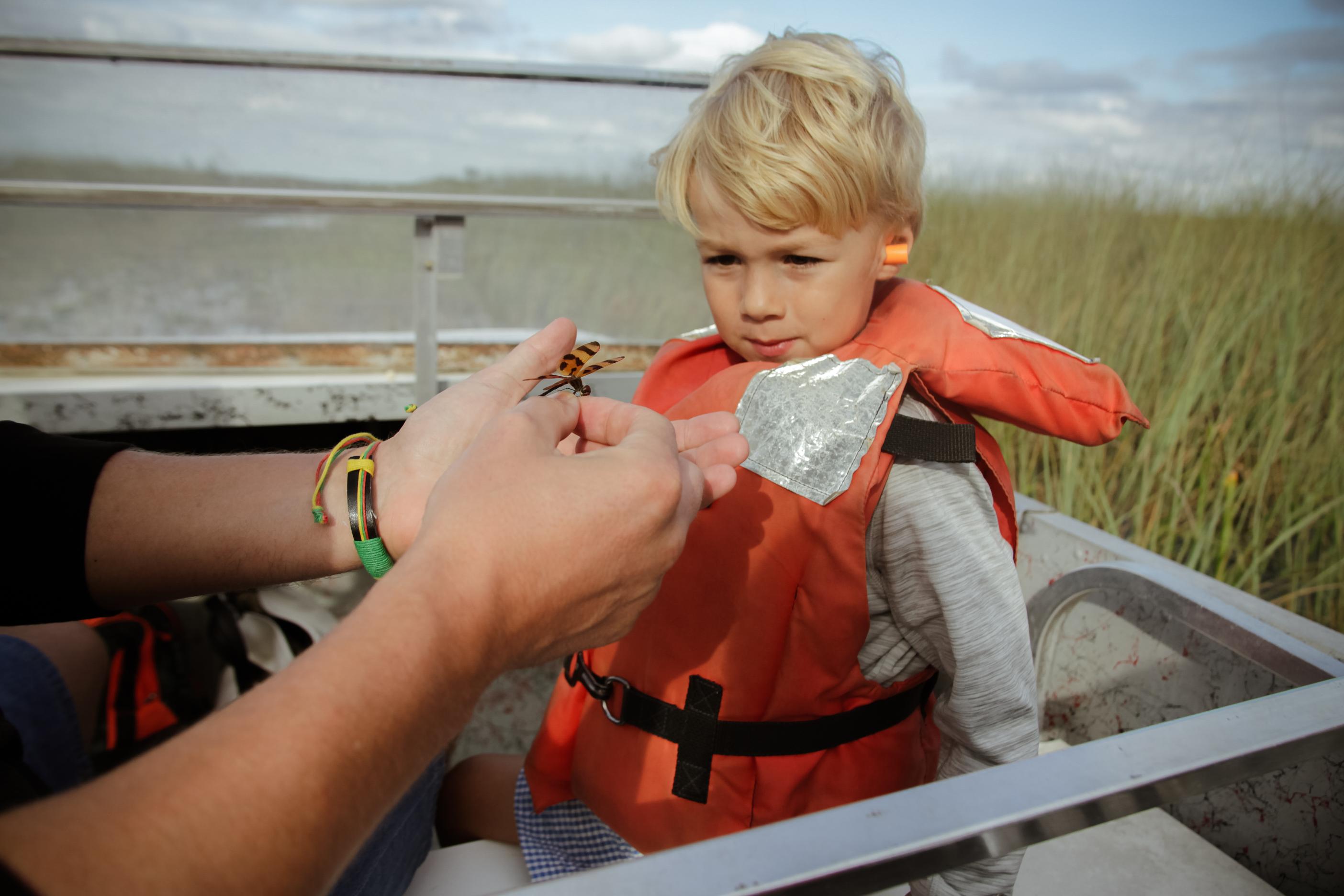
We’d love to tell thrilling stories about seeing dozens of crocodiles on this tour, but in reality, that’s not the case. The engine is loud, and crocodiles probably hear it and go deeper into the swamp. Constant tours annoy them, and humans aren’t worth eating anyway. So spotting many crocs here is quite difficult - maybe one, two, or three at most, and usually only briefly. A few were lying on sandy patches between mangrove trees. But the main thing here is the thrill of the hunt, the fresh wind in your face, and the sense of adventure. And that part is excellent.
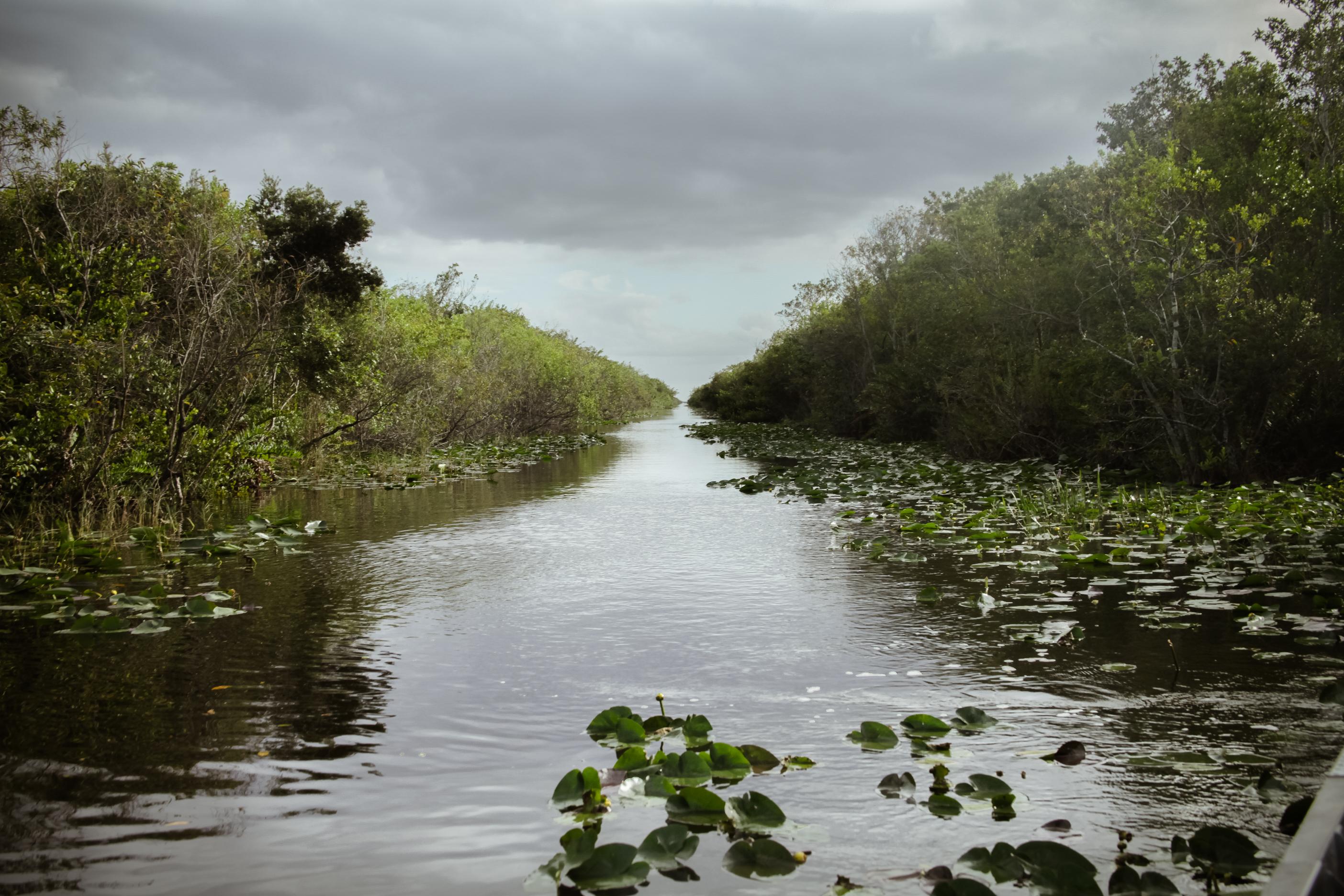
After the 20-minute airboat ride, visitors are offered a short show where a zookeeper tosses meat into crocs’ jaws, tickles their bellies, and even sticks his hand inside their mouths. For a couple of bucks, you can hold a smaller specimen with its jaws taped shut.
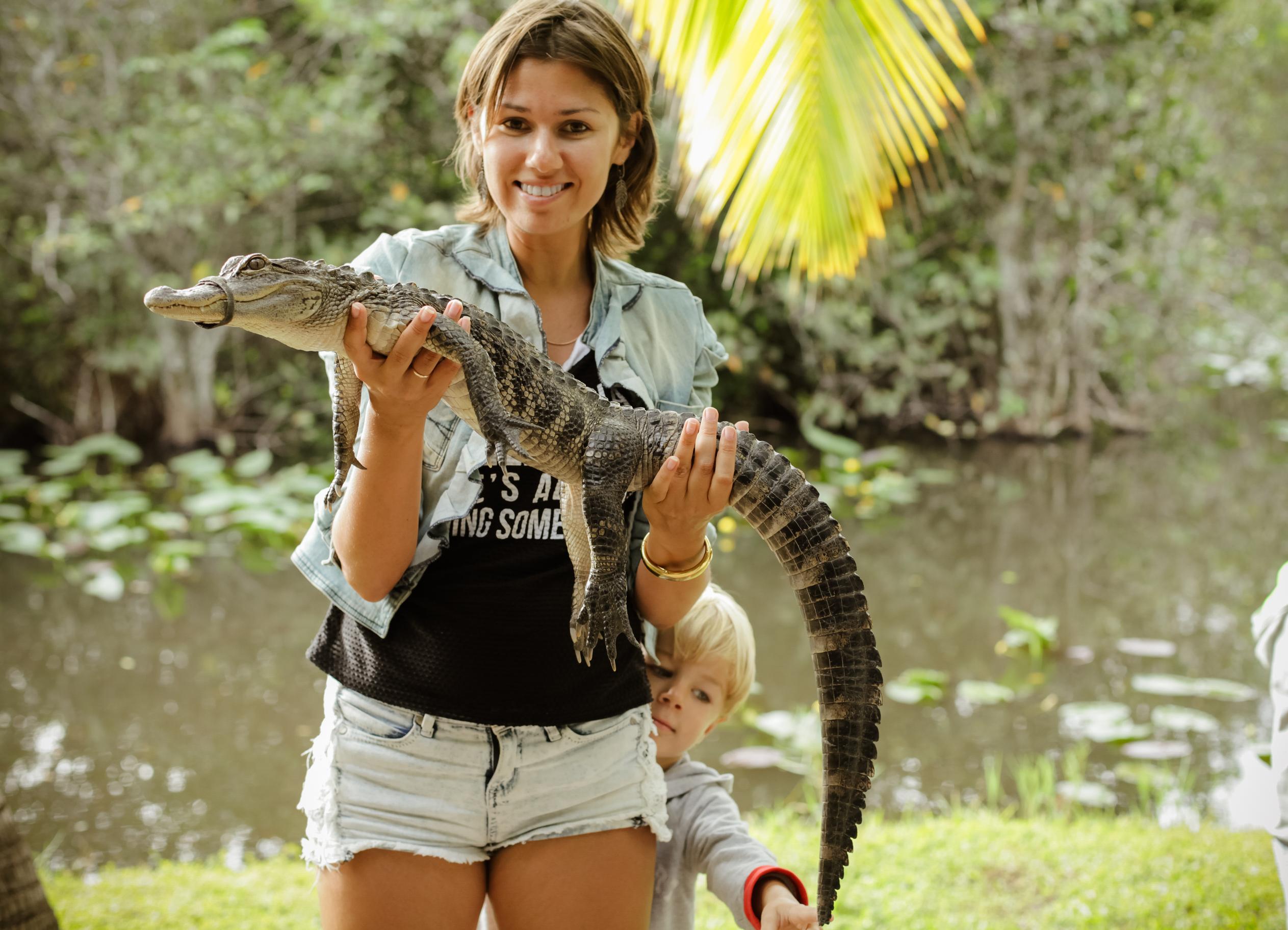 The rest of the adventure is self-guided and consists of a walk around the park. Bigger crocodiles stay behind fences, while smaller caimans roam the lawns and swim nearby. One of them casually crossed our path just a meter and a half away, terrifying the kids and my wife. Yet, it paid no attention to us at all. It crawled out of the water and calmly disappeared into the reeds. Honestly, it was almost disappointing - we wanted to run from a “real” crocodile.
The rest of the adventure is self-guided and consists of a walk around the park. Bigger crocodiles stay behind fences, while smaller caimans roam the lawns and swim nearby. One of them casually crossed our path just a meter and a half away, terrifying the kids and my wife. Yet, it paid no attention to us at all. It crawled out of the water and calmly disappeared into the reeds. Honestly, it was almost disappointing - we wanted to run from a “real” crocodile.
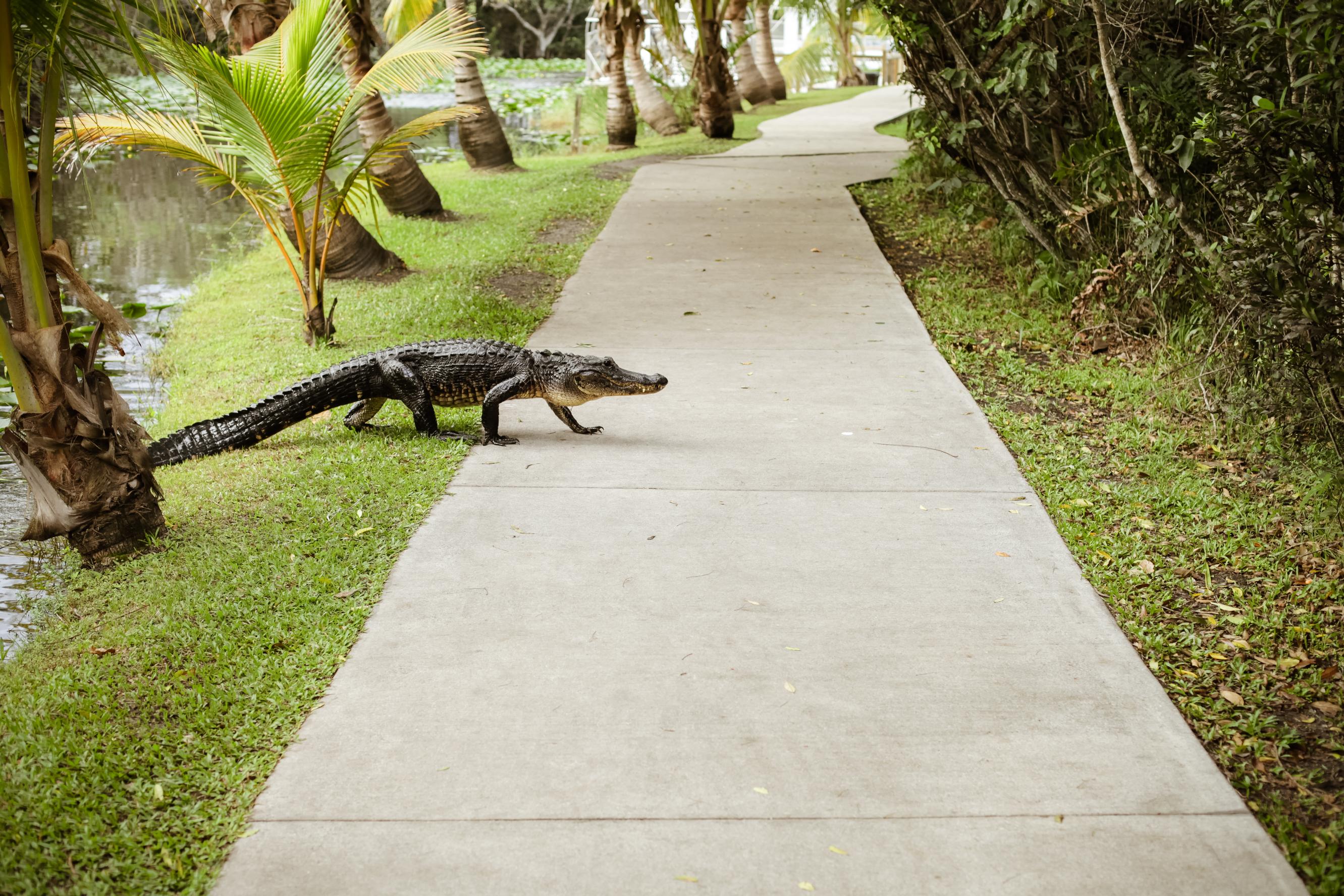 Larger alligators sat behind light mesh fences but were still easy to see. They looked carefree, though reaching out to pet them is highly not recommended.
Larger alligators sat behind light mesh fences but were still easy to see. They looked carefree, though reaching out to pet them is highly not recommended.
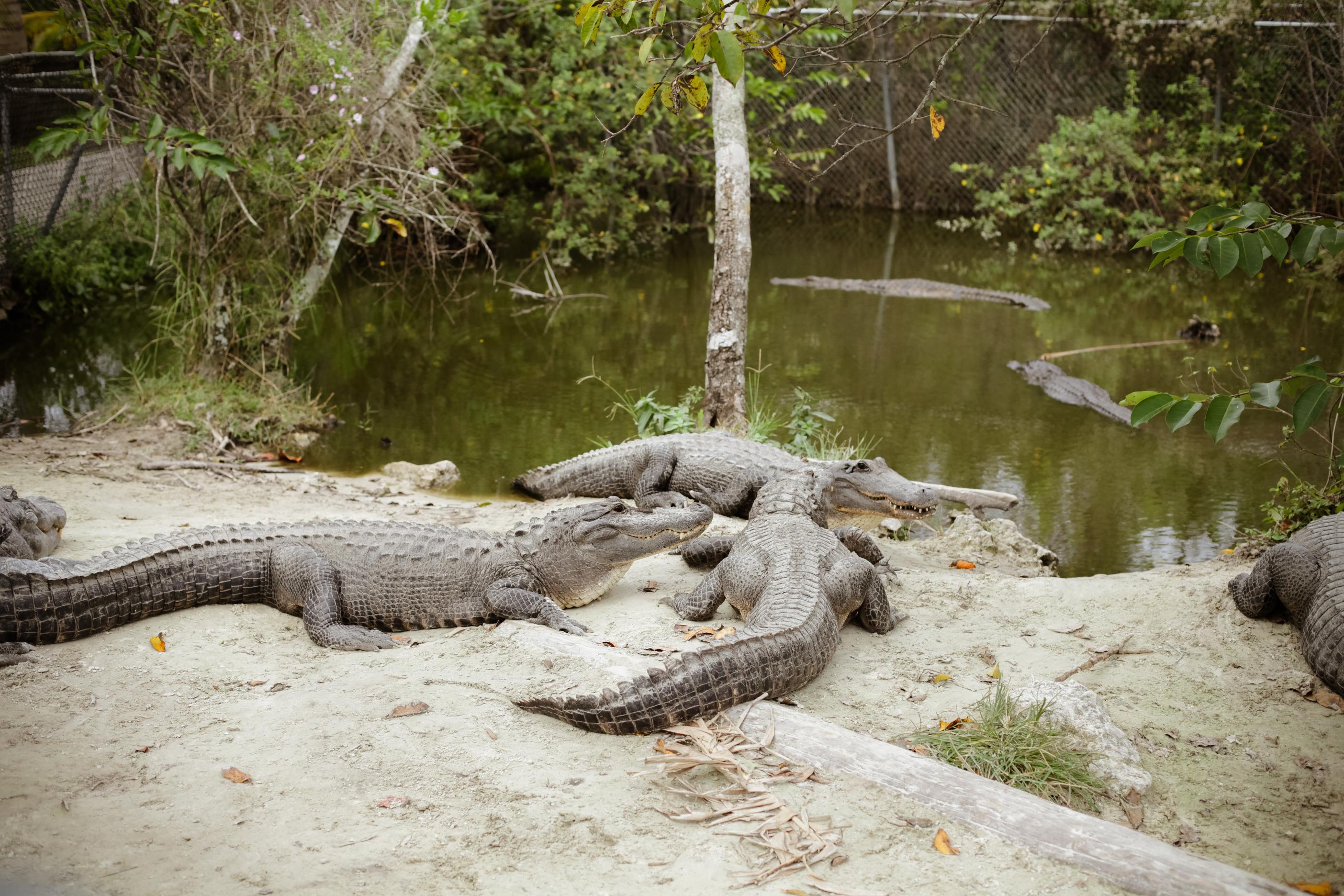
Overall, it was an amusing adventure - though without a big wow-effect.
